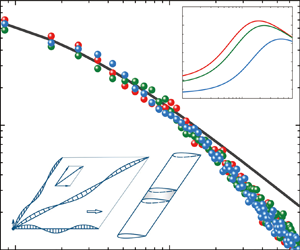Article contents
Aerodynamic lift fluctuations of an airfoil in various turbulent flows
Published online by Cambridge University Press: 23 August 2022
Abstract

A combined theoretical and experimental investigation is conducted with the objective of evaluating the lift aerodynamic admittances of an airfoil in various turbulent flow fields. Current theoretical approaches and concepts are reviewed and extended, enabling us to use a strategy to measure the one-wavenumber aerodynamic admittance in the turbulent flow field. The key of the strategy is to separate the spanwise effect from the generalized aerodynamic admittances which can be directly determined by the one-dimensional lift spectrum and one-dimensional turbulent velocity spectrum. With this strategy, the experimental values of one-wavenumber aerodynamic admittances of a two-dimensional airfoil with a NACA 0015 profile in three turbulent flow fields are obtained. As expected, due to the influence of the spanwise effect, the generalized aerodynamic admittances vary with different turbulent flow fields, exhibiting a significant dependence on flow field, and are much less than the Sears function. Contrarily, the one-wavenumber aerodynamic admittances, which are obtained in three turbulent flow fields, are generally consistent, confirming that the one-wavenumber aerodynamic admittance is mainly related to the cross-sectional shape itself. The experimental values of one-wavenumber aerodynamic admittances are compared with the Sears function. The results of all cases indicate that the experimental results agree well with the Sears function at low frequencies, while decaying faster at high frequencies.
- Type
- JFM Papers
- Information
- Copyright
- © The Author(s), 2022. Published by Cambridge University Press
References
REFERENCES
- 11
- Cited by



